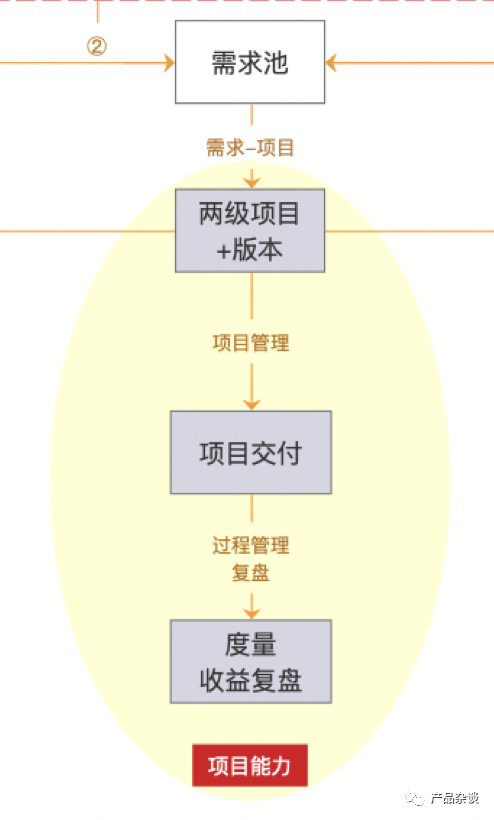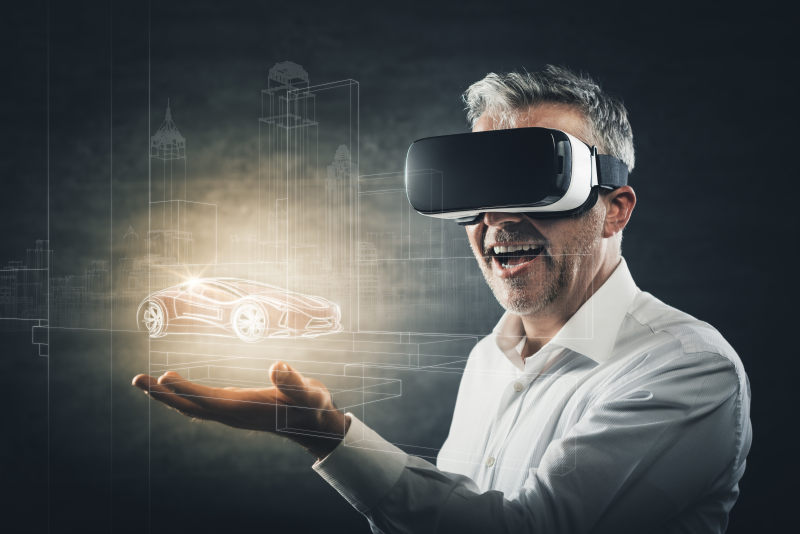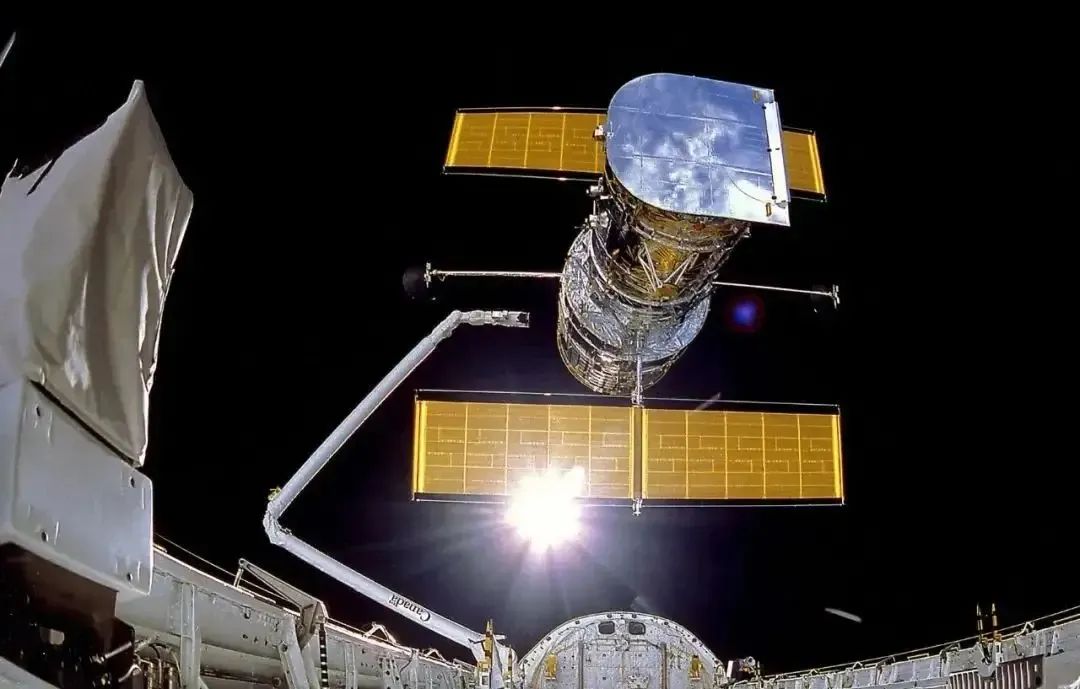Deep analysis of Central and Taiwan planning: users, mechanisms, systems
Author:Everyone is a product manager Time:2022.06.22
Editor: From the concept of Zhongtai to the heat, now, many companies have begun to adjust the organization and build Zhongtai. So how to better understand and plan Zhongtai? In this article, the author conducts in -depth analysis of the Central and Taiwan planning, and learn together.

I. Question: There are business indicators in business. Is there any in the middle and Taiwan?
I found a very obvious phenomenon when I attended the OKR report before.
Almost every OKR of the front desk business team has quantifiable indicators.
E.g:
The order business department has indexes such as single quantity, GMV, revenue, NPS; financial, commercial and other revenue departments, with income indicators; even if they perform, there are various indicators such as people's effectiveness, production capacity, satisfaction; Your OKR structure and the framework of your daily things are basically stable.
All you need to do is to keep the indicators better.
In addition, in addition to the indicators, the business department and the performance department have a characteristic that they will all have a centralized service user. This user may be C, B, or operators (such as customer service, warehouse distribution, etc. To.
In the process, everyone will focus on users and continue to study how to serve better.
What about Zhongtai?
When I write OKR, I rarely have the above two attributes to disassemble.
The most framework I use is divided into [key project support], [word of mouth experience], [internal construction of the middle and Taiwan], and [team]. The logic is probably divided according to the users of my service.
I can explain the logic closed loop of everything, but from the reporting effect, everyone may still feel that we are engaged in the project without a main line.
In daily work, the following questions are actually asked by children's shoes more than once:
E.g:
Mid -Taiwan -oriented users are diverse and sometimes span a lot. What is the relationship between these users? Most of the time in Central and Taiwan is doing the delivery of projects. Is this just a simple resource to change the output? Zhongtai provides unwanted "abilities", as well as some tools and pages. What exactly is the "product" of Zhongtai? So, what kind of framework should we understand the relationship between users, projects, and capabilities?
And how to find the so -called main line from these things?
Next, I planned a picture in China and Taiwan to try to answer this question.
2. Solution: Look at the user from the starting point, the process depends on the mechanism, and the result is to see the system

In the figure above, I set out from the user classification (starting point) to the demand and delivery implementation (process), to the product precipitation (result), and to disassemble the link.
Next, we will take a look at in 3 links:
1. Starting point, look at users
——In insight, we can know that we work hard before we have planning and routes.
The users of Zhongtai are actually more diverse. The demands and construction routes of each user may not be the same, so we need to classify it.
Under the current construction ideas of Zhongtai, I divide the user into about 4 categories:
1) Business party user:
User description: The upstream business, the needs of China and Taiwan, and users who realize specific business models and capabilities are also the largest and most priority users.
Core demand: ability. The ability to output the results of the project and the function of the business constitutes the product form of the upstream terminal user.
Delivery characteristics: projectization. Because there is a performance layer of the upstream business, and the Central Taiwan is more capable, the delivery of Zhongtai is delivered again and again with the project as the granularity.
Measure the indicator: A-business experience, to make the business feel the professionalism and collaboration support of China and Taiwan; B-project quality should ensure the function availability of the project as much as possible, easy to use, no bug, etc.; C-project, etc. The delivery efficiency is more complicated and involved in a wide range of faces. The business hopes for delivery is efficient and timely.
Construction orientation: Project process, a package of packaging (systematic+solution expert). For project -based delivery, if you want to ensure quality and efficiency, processing is a very important link (will be mentioned below); product demand link is the most difficult point in the architecture of the Central and Taiwan, because the business is to be more than one -pair of products in China and Taiwan products. Therefore, a package of packaging solves business problems and does not allow business to communicate more, that is, the construction orientation of Zhongtai.
Demand source: Demand naturally comes from the upstream business party. In order to solve the problems of many business parties and rear, the current China Taiwan realizes the business BP mechanism, and the logic of actively following the business dynamics and demand is running, and the effect is very good.
2) Product/R & D/operating user in the company:
User description: That is, the company's internal classmates, before and in the process of the front desk products, these users need to configure and manage the background products.
Core demand: Improvement. In essence, the product form is the type of management background, and the core is operating efficiency.
Delivery Features: Tools. The product itself does not involve logic or logic that has been determined, and more is the operating tool attribute.
Measurement indicators: efficient and easy to use. The core of the tool is to allow the operating users to complete the corresponding operations very conveniently, so efficient and ease of use are the core indicators of instrumentalization.
Construction -oriented: Go to artificial and scenario. If the management tools are not perfect, the corresponding supplementary position is the manual operation of product operation or research and development, and this will have many problems such as omissions, accuracy, and repeat operations. Therefore Scenification, expression means that when we are considering tool design, don't just consider the function of the interface, but what purpose the user should achieve, and then integrate the relevant operations to a scene guide). Source of demand: Internal construction, more often, it will be delivered as a supporting internal output. In terms of planning, the whole is the terminal of various operations background, such as XX operation background, XX merchant background, XX management platform, and so on.
3) External users (C, B terminal user):
User description: Obstacles, users facing the upstream business are a level, divided into C and B terminal users. Because in many scenarios in Central and Taiwan, it will also be encapsulated to provide terminal products to serve users (product functions with strong versatility and weak business indicators). For example, trading links in the field of transaction payment (shopping carts, ordering, cashier, order management, wallet coupons, etc.), merchant background (settlement, marketing, reconciliation, IM, etc.), etc.
Core demand: value & experience. Because to facing end users, it must meet the request of a certain value of users. The user's use of the product may represent the confirmation of his rights and interests, such as transactions, funds, and goods delivery. In terms of terminal products, it must also be considered factors. On the one hand, it is because of the "face" of the platform products. On the other hand, the experience is not good, which may affect functional use and may affect value.
Delivery characteristics: productization. Different from project users 'demand for capabilities, and different from internal users' demands for tools, end users perceive must be productized, and productization represents higher delivery standards.
Measurement indicators: stable and easy to use. The terminal products provided by Zhongtai are generally related to trading link nodes. The stability of these functions should be the first priority; and the ease of use may not necessarily add points, but no points must be reduced.
Construction orientation: Experience is also part of the function. For Zhongtai, both projects, tools, or end products, stability is the requirements of the base, and the experience is more than that of the Chinese and Taiwan people "not good at". After more and more Case, it is found that sometimes the experience is not good, which will affect the normal functional use. The user's operational is not convenient, and the heavy cases will cause many unnecessary complaints.
Requirement source: end user research and feedback. This information, the passive channel we will focus on customer service online information, and active channels will take the initiative to investigate and do a user experience.
4) Internal production and research users:
User description: The members of the Zhongtai themselves include the classmates of production and research. That's right, we should think of ourselves as users, and consider our pain points and demands.
Core demand: performance. This performance is actually broad, not only to respond to technical indicators such as duration, QPS, and availability, but also includes the flexibility and scalability of the China -Taiwan system in the process of business docking, as well as the risk and early warning capabilities of Zhongtai's business dimension.
Delivery characteristics: professionalism. The delivery within the Zhongtai system is not for business parties, internal product operations, and end users, but for our own future development. The interior is well done and bad, in fact, it may not be perceived in the short term. But we must ask ourselves as the most professional standards, just like building a 99%sewer that cannot be seen. Not delivered to others, just for our professional beliefs.
Measurement indicators: stable and safe, scalability. Stability and safety are the basic requirements of all middle and backstage; scalability should also be the basic requirement for China Taiwan. If it is not done, the Central Taiwan will become the bottleneck of the center and eventually lose the foundation of standing.
Construction orientation: risk awareness, architecture. Every time I report to the boss, the boss always mentioned a sentence that when there is no problem to find the Zhongtai, it actually means that you do well. When you find you, there are any big problems. This sentence can be seen that Zhongtai must repair the roof when it is sunny and prepare the risk awareness in advance. The architecture actually corresponds to complex decoupled decoupling and flexible expansion. Zhongtai faces diversity at all times, and then simplifies application access after abstraction.
Requirements: Internal research and analysis and planning. I only know my pain, and upstream users cannot pay attention to us. Therefore, the periodic excavation team's feedback and recurrence of each problem in the team is the plain material we planned.
PS: The construction route of each Zhongtai may not be the same. It is not a standard. The reference logic is sufficient.
2. Process, look at the mechanism
—— Use the mechanism to guide the "people" to precipitate the "system" and then apply "system".
The above, 4 users, indicators, construction directions, and product characteristics provided to them are all clear.
Then from the needs of user to the product, there is a starting point, there are results, what should the process do? This is also the problem that we must discuss this article.
Delivery is mainly divided into two links: demand delivery links and project implementation links.
Correspondingly, the implementation of the project is not a problem, but the demand delivery is the most tricky. Why?
Here, I quoted Xuan difficulties in a paragraph in the history of Ali's business, and let everyone feel: We also confirmed that we can feel the same in the construction of Zhongtai daily.
Next, we will talk about projects and needs respectively (focusing on this link below).

1) Delivery of project dimensions:
Based on the project perspective, there is nothing to talk about conventional development and implementation links.
The focus is on both ends: demand processing and revenue review, and establish a corresponding mechanism.

Requirements to be established, carefully determine the priority, and ensure that resources are spent on the blade.
The measuring income recovery mechanism, in response to the collaboration problems in the process, continuously summarizes the precipitation and improvement process, and checks whether the income of the initial project of CHECK has reached.
PS: Because this article focuses on product level issues, the project angle is temporarily described in detail.
2) Delivery of demand dimensions:
Then talk about the words that Ali Xuan is difficult to mention.
The demand for China and Taiwan is relatively complicated. This complexity is divided into horizontal and vertical.
Looking at the horizontal direction, the realization of a demand, a high probability that it will be assembled cross -domain.
In the case of our business, almost all of the large and large demand will include Review of the following product domain.
① Preparation module: users, merchants, goods, promotion, service
② Information flow module: order, reverse after -sales, arbitration
③ Funds flow module: payment, settlement, reconciliation, fiscal and tax compliance
④ real logistics module: performance, warehouse distribution, quality inspection, refund
⑤ Other modules: risk control, customer service, data statistics
So many products are assembled, related associations, related effects. This is indeed a complicated thing.
Looking at the vertical direction, almost every product domain requires strong professional accumulation, and some also require industry accumulation (such as finance, logistics, and payment).
Therefore, it is necessary to provide a lot of complicated issues to provide a capacity, but it cannot be felt outside. For example, taking payment as an example, receiving orders, settlement, from the perception of the transaction layer, to the logic of the payment layer, and then to the account layer to account for accounting. Finally, the funds must be considered to move the whole body.
Since then, the horizontal and vertical are complicated, so how to solve this problem?
My answer is: establish a system, application system. Note that the system here is not only a product system, but more systematic.
Maybe someone will ask? Such a complicated thing will become the year of the monkey.
That's right, establishing and application systems, always on the road, is the theme of our chapter: "Process, look at the mechanism".
What is the mechanism?
The mechanism is to traction "people" to summarize past problems and experience into "systems", and then pull "people" to apply these "systems". Continuously polishing and constant precipitation, gradually change everyone's experience into systems (processes, specifications, standards, tools, structured archives), and gradually do not rely on individuals.
Next, we will tell the "horizontal" and "vertical" mechanism mentioned above.
A. Horizontal mechanism: Zhongtai platform construction
Everyone knows that Zhongtai will face many business models. In the category of China and Taiwan, it will gradually accumulate a lot of ability to stabilize models, and it will also design the ability to design new models.
We first divide the horizontal demand into two categories. These two methods are different.

It is convenient for subsequent understanding, first explain the noun in the figure above (here is the introduction only to help everyone understand this article, there will be separate articles in the future to explain the system design and practice in detail):
① [System] Rule Center: Every mode is all logical and parameter declaration implemented in the whole domain of Zhongtai (including preparation, information flow, capital flow, real logistics, others); Structured (structured is the product domain-character-trading node-product function point, which has been abstracted, and later is logical and parameters). The rules center read operation.
② [System] Configuration Center: Taking the Global business line as the main key, you can guide business self -service disassembly requirements and make pre -configuration, and guide the one -stop platform for the configuration of Zhongtai to review the configuration. In many times, there are basically no development and no test and quickly complete the launch. Note that the configuration items in the configuration center are theoretically the subset of the rules center parameters. The configuration center storage configuration items must be from high frequency to low frequency. The configuration center is written to the outside.
③ [System] Open Platform: Introduction to China and Taiwan with a three -dimensional three -dimensional introduction with domain capabilities. From application scenarios, ability description, access process, technical docking, product operation and other dimensions, the purpose is to hope that the upstream business users can realize self -assistant interpretation Access and access can also achieve horizontal familiarity between cross -domain production and research between China and Taiwan. The open platform is the external reading operation.
④ [People] Solution Experts: Experts who can understand strategies and business, and be familiar with the ability of Zhongtai's overall ability and have assembly capabilities.
⑤ [Human] Vertical communication: Solution experts are familiar with the degree of abilities of each domain, which is more based on the contact point of horizontal and vertical domain when assembling series. For the new model, more often requires some more professional assessments in vertical domain, and at this time, vertical communication is needed.
OK, after understanding these nouns explanations, let us return to the main line of the article.
According to the "human traction system" I described, the mechanism runs as follows:
① The implementation of the "existing model" needs to rely on the system [Rules Center] and [Configuration Center]; ② The realization of the "new model" needs to rely on the system [open platform], plus people's ability [solve the solution Program experts] and [vertical communication].
③ Then wait for the "new model" to mature, and update the corresponding [Rules Center] [Configuration Center] to the system, and gradually circulate.
After a period of operation, the above mechanism has initially achieved results and is currently under construction.
B. Vertical mechanism: vertical power domain
The fundamental principle of the operating mechanism of vertical power domain is the same as the above -mentioned horizontal mid -platform platform construction.
The core is to hope that the thinking of the system has become lower and lower.
For incremental ability, it can only rely on experts' vertical domain knowledge and experience, and then wait for the stability of the ability to be stable and then substituted into the stock ability system to circulate.

C. Horizontal and vertical collaboration: two -way traction
Horizontally, it is the reference and rules of vertical capabilities.
Vertically, there are many applications of vertical capabilities. At this time, not only the horizontal items, but also independent applications or other non -Zhongtai business officers directly cited.
Horizontal and vertical, how to cooperate?
Speaking of the current stage of the current transition, my view of the relationship between the two:
① Within the horizontal project of the Central and Taiwan, within the scope of the mode capacity, it is more to allow the horizontal traction vertical closed loop to be delivered. For example, [Configuration Center] [Rule Center], these are all systems across the entire domain.
② From the perspective of vertical domain, the vertical ability and mode/item need to be decoupled. For example, [Open Platform] is delivered from the perspective of capabilities, and the application scenarios are full samples, not only considering Zhongtai.
3. Result, look at the system
——Acreasingly eliminating the uncertain factors of people and assets with the system.
1) System classification:
According to the top, the 4 categories of users in the middle and platforms, in fact, our "system" will have different forms.
Above the length of the "starting point" and "process" has been basically described, and a little summary here:

① Business controlled users: [Configuration Center], [Rules], [Open Platform], [Comprehensive Inquiry], [Other Route]. The first three noun explanations have been explained, and the latter two are briefly described as:
[Comprehensive query] The system is an application product made by the "data connectivity" of the basic characteristics of the central and Taiwan, which can allow all types of users to query in this system without discrete to spend information in various places. For example, see the history of a certain order, the current, and future information (including preparation, information flow, capital flow, real logistics, etc.).
[Other routes] More information convergence measures except the project. For example, there are a lot of background systems in Zhongtai, which can be used as a navigation station to facilitate the use of various types of users. For example, SOP and training, they also want to turn the business to the Zhongtai, which can become a 1 -to -1 interaction point.
② Product/R & D/operating user in the company: [Vertical-Configuration Effective Class], [Vertical-Operation Tools]. The former is mainly used by internal production and research users, providing basic strategies/data configuration and other management operations for product operation, such as trading link nodes, receiving orders settlement rules, etc.; Strategic/data configuration and other management operations, such as promotional activities, special settings, merchant management, etc.
③ External users (C and B terminal users): C -terminal products mainly focus on the upstream and downstream of the transaction. B -end products mainly provide terminal products around merchant operations.
④ Internal production and research users: Some invisible underlying capabilities provided for output upstream product capabilities. For example, various trading links are upstream capacity, but the ability to build a link to build a link is the bottom capacity; for example, the special self -service assembly system is upstream, but how to achieve modular assembly and support the multi -party co -construction module of China Taiwan and business. The ability is the underlying ability.
At this point, we have completed all the explanations of "starting point-user", "process-mechanism" and "result-system".
2) Index of Zhongtai:
Finally, let's go back to the question of the beginning of the article: "The business has business indicators, is there a Central Taiwan?"
I think the answer is clear, there must be. However, for Zhongtai, we need to split settings according to user classification and system attributes.
There may be a lot of indicators, but we must focus on a certain stage. Find the core contradictions at the moment and establish an indicator to break through.
At the current stage of the construction of the Central and Taiwan construction, we will complete the completion of the completion of [Zhongtai Platform]-[Stock Power]-[Configuration Center] as our Arctic Star indicators because I think it can affect the overall change.
Other indicators, according to the needs, there will also be separate indicators. For example, the number and processing index of the online are measured by the quality of the project and the satisfaction of user customer complaints.
Author: Synthopathy, WeChat public account: product miscellaneous talk (Life_PM)
This article is published by@本 本 本 本 本 is the product manager. Reprinting is prohibited without the author's permission.
The question map is from UNSPLASH, based on the CC0 protocol.
- END -
PICO on the Cosmic Wind: VR idle products under the marketing of "crazy" marketing, practitioners?

Picture source: Oriental ICRecently, Pico announced that it has cooperated with Di...
The near -ground track space is a "big treasure" "space science popularization"

Not long ago, Shenzhou 14 manned spacecraft lifted off smoothly. The three astrona...